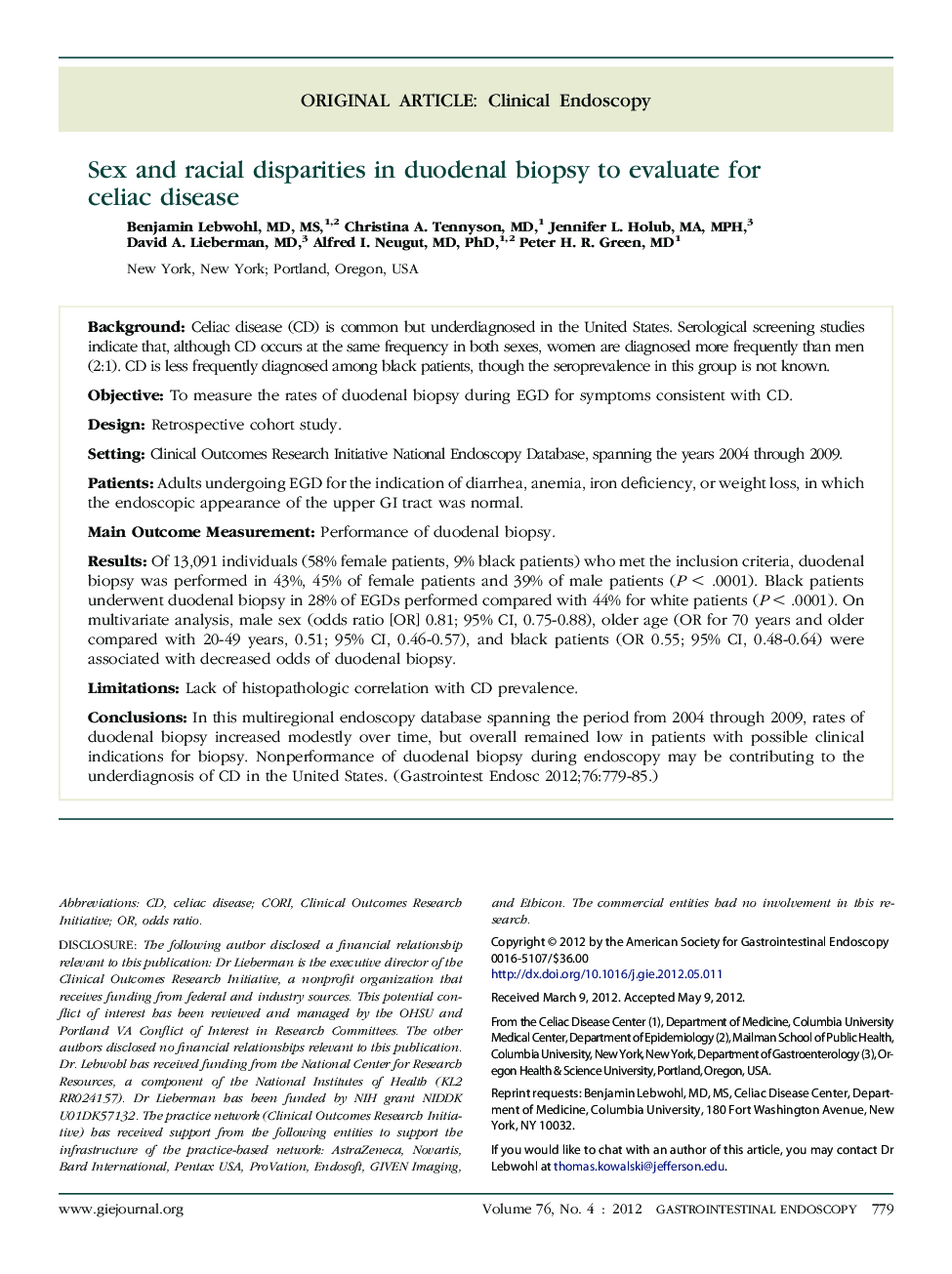| Article ID | Journal | Published Year | Pages | File Type |
|---|---|---|---|---|
| 3304662 | Gastrointestinal Endoscopy | 2012 | 7 Pages |
BackgroundCeliac disease (CD) is common but underdiagnosed in the United States. Serological screening studies indicate that, although CD occurs at the same frequency in both sexes, women are diagnosed more frequently than men (2:1). CD is less frequently diagnosed among black patients, though the seroprevalence in this group is not known.ObjectiveTo measure the rates of duodenal biopsy during EGD for symptoms consistent with CD.DesignRetrospective cohort study.SettingClinical Outcomes Research Initiative National Endoscopy Database, spanning the years 2004 through 2009.PatientsAdults undergoing EGD for the indication of diarrhea, anemia, iron deficiency, or weight loss, in which the endoscopic appearance of the upper GI tract was normal.Main Outcome MeasurementPerformance of duodenal biopsy.ResultsOf 13,091 individuals (58% female patients, 9% black patients) who met the inclusion criteria, duodenal biopsy was performed in 43%, 45% of female patients and 39% of male patients (P < .0001). Black patients underwent duodenal biopsy in 28% of EGDs performed compared with 44% for white patients (P < .0001). On multivariate analysis, male sex (odds ratio [OR] 0.81; 95% CI, 0.75-0.88), older age (OR for 70 years and older compared with 20-49 years, 0.51; 95% CI, 0.46-0.57), and black patients (OR 0.55; 95% CI, 0.48-0.64) were associated with decreased odds of duodenal biopsy.LimitationsLack of histopathologic correlation with CD prevalence.ConclusionsIn this multiregional endoscopy database spanning the period from 2004 through 2009, rates of duodenal biopsy increased modestly over time, but overall remained low in patients with possible clinical indications for biopsy. Nonperformance of duodenal biopsy during endoscopy may be contributing to the underdiagnosis of CD in the United States.
